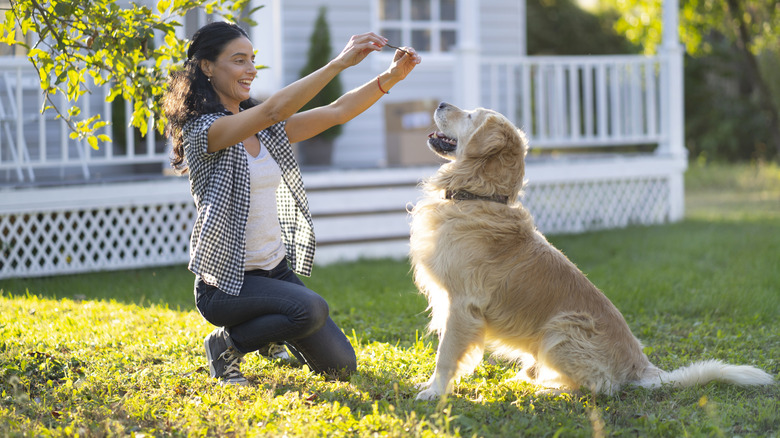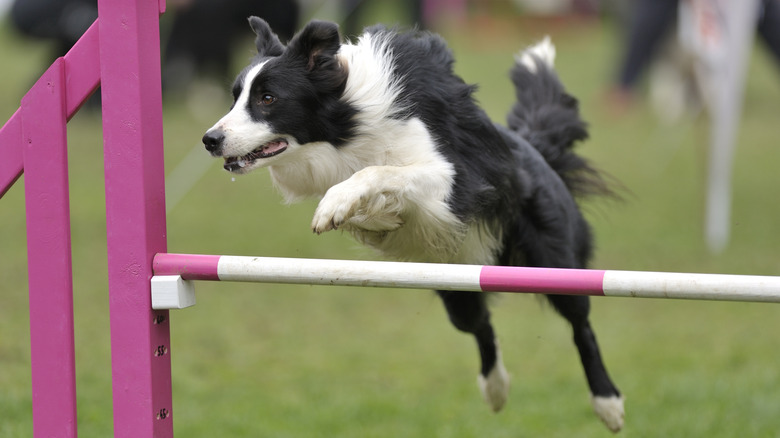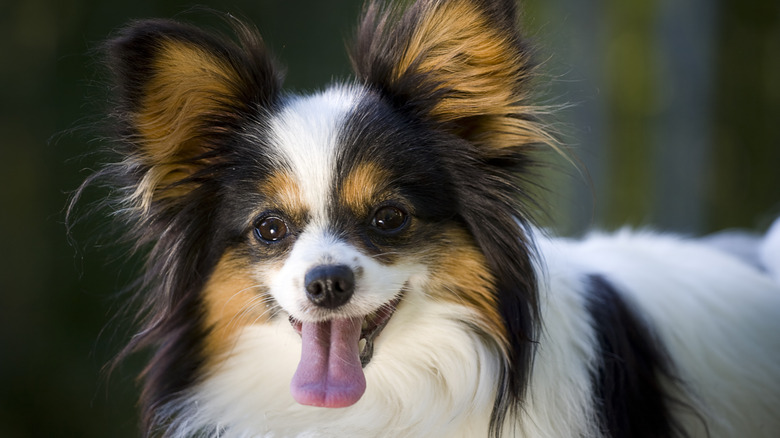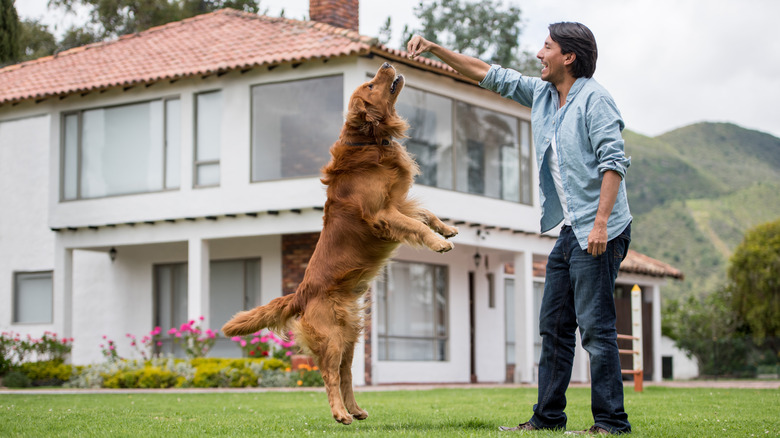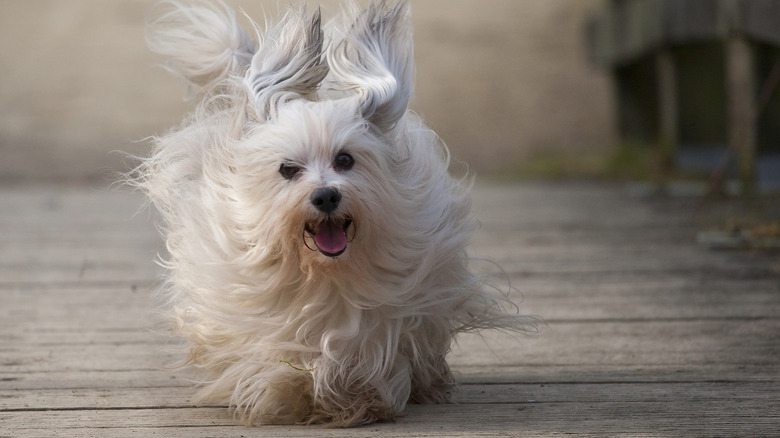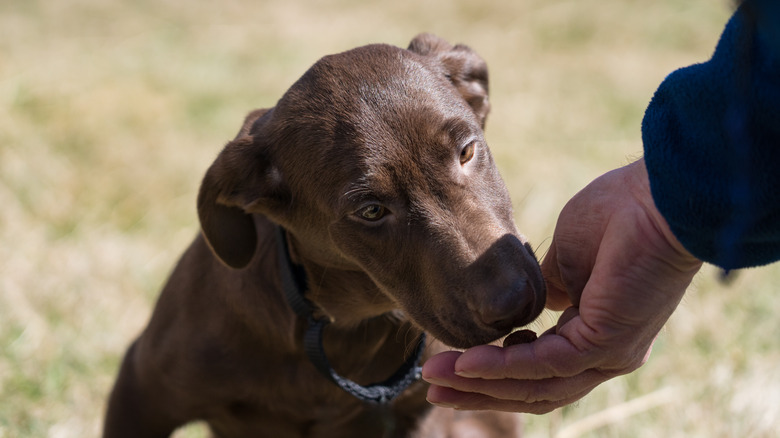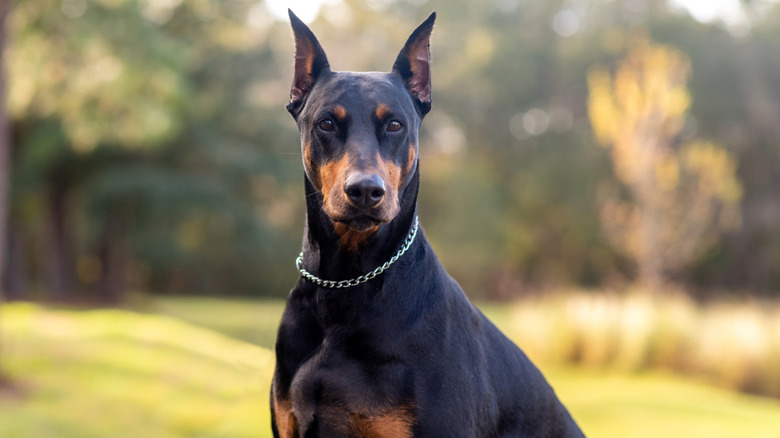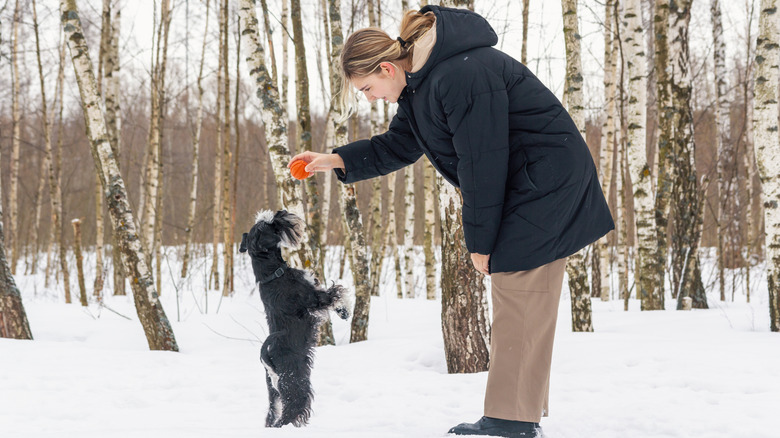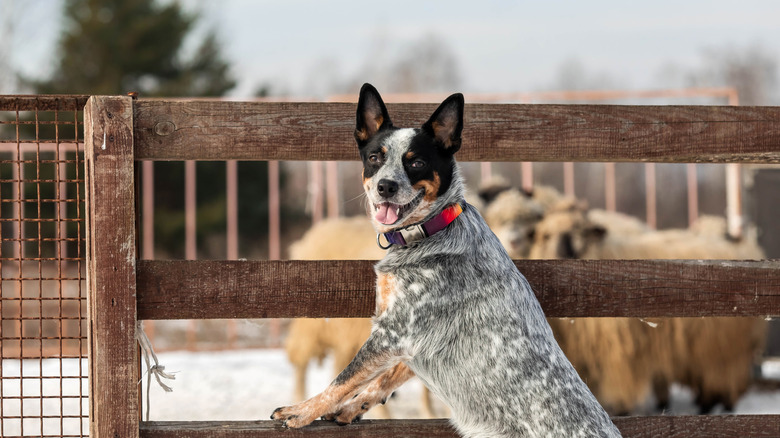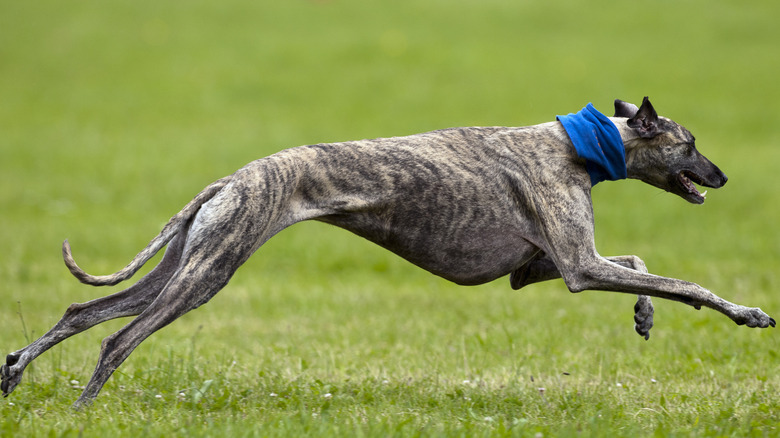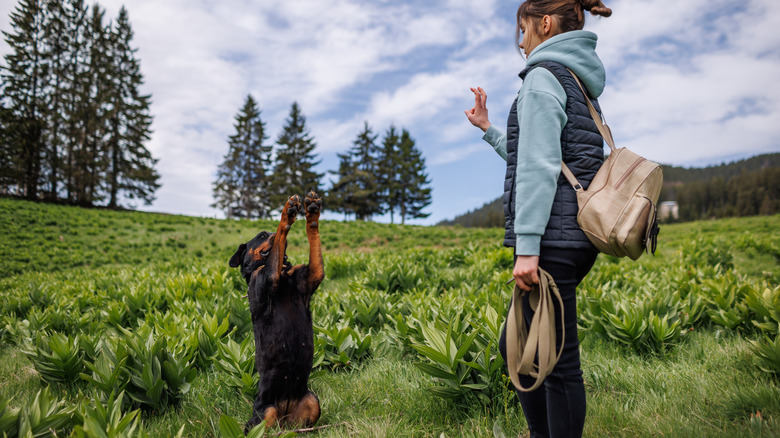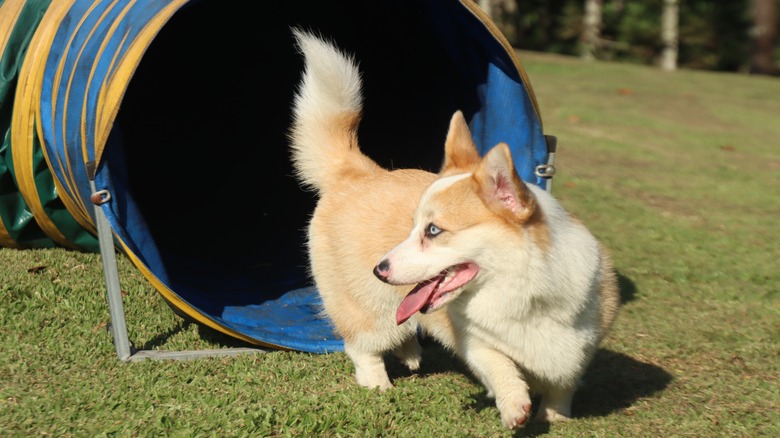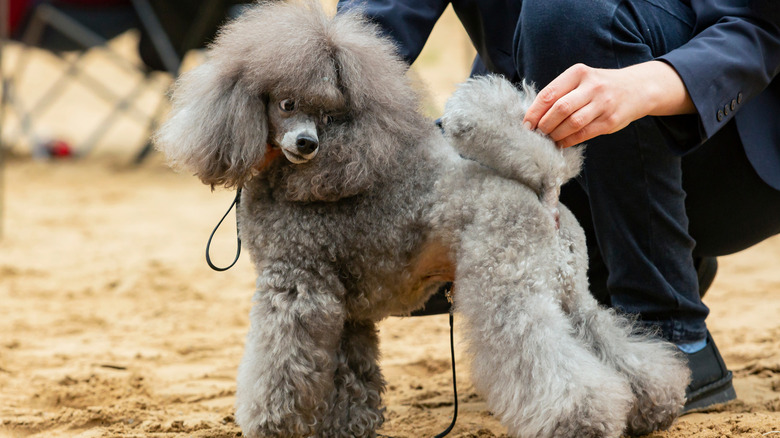The Most Obedient Dog Breeds Ever
Not all dogs were born to be obedient followers, whether it be the stubbornness of a terrier, the vocalness of the mighty little Chihuahua, or the hound who follows its nose through life. Yet, if given the proper training and patience, any pooch can be guided to suit many purposes, from worker to astute companion. In fact, lots of canines thrive when they have that focus or a task that stimulates their physical and mental needs. Additionally, having a say over whether they give chase at a random distraction or wait on your word can help keep a beloved pet safe.
For some dog breeds, obedience comes more naturally, with their genetic background or history conferring a need for attentiveness when performing specific jobs. When given the proper attention, these highly trainable and intelligent pups make for reliable and loving companions for any pet parent. However, each has its own strengths and potential hiccups to prepare for.
Border collie
The border collie is a popular breed thanks to its adaptability, which allows it to thrive in both a high-work environment and as a family pet. This astute doggo has its roots in herding, with its lineage stemming from sheepdogs native to the British Isles. This history as a working-class pup gives the border collie abundant speed, energy, and the intelligence needed to perform essential tasks. As a family pet, it is highly playful and the perfect companion for a game of fetch with a frisbee. As a testament to its obedience, other positions given to the border collie include search and rescue and, in some cases, assisting law enforcement.
These are brilliant dogs, able to learn over 1,000 nouns. Yet, that active mind and body can hinder training, and thus it is essential to make sure a border collie is adequately stimulated to avoid issues like chasing, anxiety, and reactivity to other dogs. Positive reinforcement and motivation will go a long way to honing their energy and making them attentive listeners. Positivity is also crucial because border collies can sometimes get caught up in their nervousness. Still, these dogs will learn new tricks and commands that outpace most other breeds.
Papillon
While their fluffy appearance and kind personality may lead some to think of the papillion as a lap dog, this energetic and intelligent small breed needs plenty of stimulation. The proud papillon thrives in agility and obedience competitions, making them a favorite among competitors, with the prestigiously named Loteki Supernatural Being picking up Best of Show at the Westminster Kennel Club Dog Show in 1999. The papillon has also seen growing favor among pet parents, hitting its highest rank in 2023 when it became the 45th most popular breed with the American Kennel Club. As a family pet, these are very loyal canines known to orbit their favorite person, waiting on their commands.
The papillon's lack of wanderlust can be offset by its prey drive, so managing that instinct may be one of the biggest challenges an owner faces to having an obedient pup; you will want to employ methods like predation substitute training. Still, utilizing that high energy and quick learning skills can turn a papillon into the ideal toy-size faithful family member. Whether you are looking for a show dog or a trusty companion, a well-trained papillion will fill that role with an adorable smile.
German shepherd
The German shepherd's strong work ethic, loyalty, and intelligence have made it the go-to canine for law enforcement; in Canada, it's the official service dog for the RCMP. This proud pooch is not just a working doggo, though, as it has become a loving family pet that keeps up well with on-the-go households. The AKC identified it as 2023's fourth most popular dog breed in the U.S. This reputation is not just because of its utility, as the German shepherd has enjoyed its time in the spotlight; the iconic Rin Tin Tin has starred in over 20 movies.
While these are highly intelligent dogs, they have received some unwarranted negative perceptions, including incidents of German shepherds attacking unexpectedly. Yet, the chances of misbehaving can be addressed through early socialization as a puppy, meeting mental and physical stimulus requirements, establishing clear boundaries, and remaining clear in your training plan. To ensure you have an obedient partner in the German shepherd, employ consistent training and be prepared to tackle issues like selective listening, jumping up, pulling the leash on walks, and occasional whining. With determination, you can raise a trusty German shepherd that can fill the role of protector, companion, or worker.
Vizsla
This Hungarian-originating pooch is a seasoned sport and pointer breed that strikes a handsome profile with a muscular appearance and a bright, rust-colored coat. While the Vizsla was bred to work outdoors, its affectionate nature earned it the nickname "Velcro Vizsla" from those lucky enough to have one of these happy-go-lucky dogs stuck to their side. To keep them content, the Vizsla needs plenty of exercise, making them perfect for homes where they have assigned work or a jogging buddy with whom they can start the day. At the same time, this pooch needs an all-day companion to ensure its energy gets burned off and it doesn't become destructive at home.
Vizslas have a great temperament for training thanks to their intelligence, energy, and a willingness to please their owners. These natural traits do not mean that a potential pet parent will not face issues, as the breed's high prey drive is one instinct that will need to be addressed by a trainer. Patience and positive reinforcement will go a long way in turning the boisterous Vizsla into a well-behaved pooch. Prioritize obedience commands and use proven methods; clicker training will help get a Vizsla to follow your commands. If you do the work, you will be hard-pressed to find a more loyal and loving companion at your call than the Vizsla.
Golden retriever
Thanks to its naturally kind and playful nature, the golden retriever has long been a cherished family pet. Bred to recover ducks and other fowl for hunters, the golden retriever retains some of its hunting traits, making it a companion needing plenty of play or an assigned job to stay content. This desire to keep busy has put the affectionate canine in many working roles: cherished as therapy dogs, used to assist those with disabilities, and utilized in search and rescue efforts. The golden retriever is also a favorite on screen, including distinguished roles like Buddy in "Air Bud" and Shadow in "Homeward Bound."
Golden retrievers have a youthful energy. Compared to other dogs, many keep their puppy energy and habits until they are four years old, with some attributes sticking for a lifetime. To start them off on the right paw, training should begin at a young age – 2 to 6 months — with basic obedience and socialization classes. As the retriever transitions to its rebellious teenager phase spanning 6 to 18 months, socialization and finding good friends become as crucial as building on the fundamental skills learned as a puppy. By the time they hit maturity at 18 to 24 months, you may already have a well-trained and obedient pooch, though you could have to keep working on a particular behavior.
Havanese
Hailing from Cuba, the toy-sized Havanese is primarily known as a companion breed with an overly affectionate and playful nature that charms many pet parents. A family dog through and through, the Havanese does not need a large yard for roaming but rather the attention and affection of its favorite humans. Combine this with the breed's high intelligence, and there is potential for training an obedient companion. The Havanese temperament has led to its use as a therapy and assistance dog. Other jobs given to the Havanese include detecting mold or termites and working as a coveted show dog.
The biggest challenge that most caretakers have with their Havanese is falling for their adorable charms, with the desire to treat them outweighing the importance of training. Establishing boundaries with the Havanese is essential, and crate training when young, including closing them in while they eat, can go a long way towards establishing those needed barriers. When properly conditioned, the Havanese will want to be with their favorite people and closely follow their every lead.
Labrador retriever
A sporting breed, the Labrador retriever is a highly athletic and intelligent dog whose utility has made it one of America's most beloved pets. It held the No. one spot in the AKC's ranking for 31 consecutive years, only to be beaten out by the French bulldog in 2022. Part of the dog's popularity comes from its friendly, unreserved, and kind personality, which puts it on par with the golden retriever for being a wonderful family member; they also make great friends with other pets. While still used as retrievers in hunting, the canine's kind nature also has seen it suited to taking on care roles such as therapy dogs; their gentleness makes them particularly well suited for older person care facilities.
To create an inseparable bond through training, a pet parent will see the most success starting when the Lab is a puppy. Socialization, teaching basic commands, and spending quality time together are all essential in raising an obedient dog. These are not reliably treat-driven canines, as the excitement of a visitor or playmate often outweighs the prospect of food. Moreover, the breed's love of affection and lack of personal space may hinder training. Raising a faithful Labrador will take some patience but will pay off in spades.
Doberman pinscher
Sometimes confused with its German counterpart, the Doberman pinscher can paint an intimidating picture. Often depicted as a villain on the screen, its origins also feed into its daunting presence. The pooch originated in 19th-century Germany when Karl Friedrich Louis Dobermann bred them to keep him safe at work while collecting taxes. Yet, this job was given to the breed because of how trainable they can be and their attentive and loyal nature. They can be good with kids with the right training, and make ideal guardians and companions to a single or two-parent home.
Training a Doberman is essential to bringing out the best of the breed, as their high energy and intellect mean they need to stay constantly engaged. Continuous praise and reward to get the desired reaction is a great starting point. Ensuring the Doberman always stays focused on you is essential; without direction, the canine's mind can wander and become anxious. Start with basic commands when they are young pups, and work up to more complex commands as they age; you need to establish yourself as the alpha dog. Sticking to a plan and getting a professional trainer (if needed) can help the Doberman thrive as a loving, devoted pet in the right home.
Miniature schnauzer
One of the more recognizable terriers thanks to that handsome haircut, which gives them an expressive face highlighted by a beard and eyebrows, the miniature schnauzer may not seem like a highly trainable dog. While it certainly has the potential for that signature terrier stubbornness, it also shares the history of being a working dog as a rat catcher. Nowadays, the mini schnauzer is more of a revered family pet, thanks to its affectionate nature and big personality.
While you must overcome this handsome pooch's prey drive and tendency to chase various wildlife, it is a very intelligent breed that can learn new tricks and commands quickly. Positive reinforcement and recall training will go far in turning this naturally curious dog into a well-behaved canine companion. This highly adaptable pup can thrive in various homes, but introducing them to multiple environments and people will help curtail future anxiety issues and help shape them into a friendly and happy partner.
Australian cattle dog (blue heeler)
One might mistake this herding dog for a mixed breed, given its beautiful coat in various colors. However, Australian cattle dog history goes back to the start of the 19th century, when it was bred to help manage the growing cattle land in Australia. Like other breeds that have a history of working vast areas of land, these are clever canines with abundant energy to burn. While the blue heeler may struggle with other pets and kids due to its herding instincts, it can make an outstanding member of a busy family with enough training and an outlet for its energy.
The puppy phase for this breed can be chaotic, but starting training at a young age and exercising patience will help shape their personalities into adulthood. Mental stimulation is also necessary, and many blue heeler parents point out that their dogs go through toys and get bored with them pretty fast. Obedience may not come naturally when dealing with a young or unruly Australian cattle dog. Still, with the right direction and plenty of space and activities to keep them busy, blue heelers make for great companions who will wait on their owner's every command.
Greyhound
The greyhound is best known for its speed, hitting up to 45 mph. As the world's fastest canine, it has held acclaim as a racing dog, with stadiums dedicated to witnessing the sporty pup make chase. The greyhound comes from an ancient line, with depictions of it appearing in Greek and Egyptian art from a time when it was primarily used as a hunter. While famous for its physical prowess, this is an affectionate breed with a friendly temperament towards other pets and people alike.
The key to winning over a greyhound is to provide plenty of love and slowly open them up to a new environment before you begin training. Training in short bursts will also help these high-energy canines get the hang of listening to your commands or paying attention to a clicker. The primary challenge will be keeping the greyhounds' attention focused, as their sighthound origins make them easily distracted dogs. Solo thinkers that can be very sensitive in temperament, this is a pooch that requires a lot of love and patience to reign in, but once you do, you'll have an obedient companion.
Rottweiler
Media and entertainment have branded Rottweilers as an aggressive, scary breed that many approach cautiously. Their history as guard dogs dates back to the Roman Empire, and they are still used in similar roles of authority today, including law enforcement. A responsible Rottie parent will tell you that this gruff vision of their beloved pooch is off the mark. These clever dogs are cherished for their loyalty, making them an ideal family addition; there is a reason these big pups were the AKC's ninth most popular dog breed as of 2023.
Earning the Rottweiler's respect with understanding and taking the lead is essential to raising an obedient friend. Starting young is ideal for the Rottie, as the time spent bonding and training will only strengthen their readiness to follow your lead. The pooches' history as protectors and working dogs does mean they are prone to being more aggressive, so careful socialization at a young age will help you keep control when those protective instincts kick in. Consistency and constant cues are keys to success; you will find this a very trusty and easy-to-train dog.
Pembroke Welsh corgi
Corgis may seem far removed from being a potential obedient companion, with the borky breed known for consistently announcing their presence to their owners. While better known as a companion dog, not to mention the beloved pet of British royalty, their roots are in herding. This history means that while they make beloved partners with a relatively low-maintenance lifestyle, they have an inherent intelligence that can make them easy to train.
These canines thrive on consistency and constant companionship during the training process. Including grooming as part of your approach for this double-coated dog is as necessary as watching their weight, given their propensity for obesity with their stocky build. Dealing with the barking is a task unto itself. Teaching them to bark on command may seem counterintuitive, but it helps to control when they choose to be vocal. Otherwise, learning how to prepare the "quiet" command can help curtail the corgi's propensity for barking. Even if you can't limit their noise, these quick learners may surprise you with how devoted they can be.
Poodle
Coming in various sizes, the poodle has long been a famous show dog thanks to its high trainability and grace when performing tricks and feats of agility. While its history lies in helping retrieve waterfowl, its adaptability has made the poodle a beloved pet for any family or a hard worker on the show floor. These are very clever dogs, able to pick up on training fast and obey their owner's commands on the first try up to 95% of the time, according to a ranking completed by professor of canine psychology Dr. Stanley Coren.
The poodle's high energy and intellect mean that it is essential to keep them mentally and physically stimulated and focused. Additionally, consistency and socialization at a young age will often see the poodle better settle into its affectionate nature. Separation anxiety can be an issue, and their intelligence sometimes results in them wanting to outsmart their owner, but a well-trained poodle is renowned for being an obedient companion.
